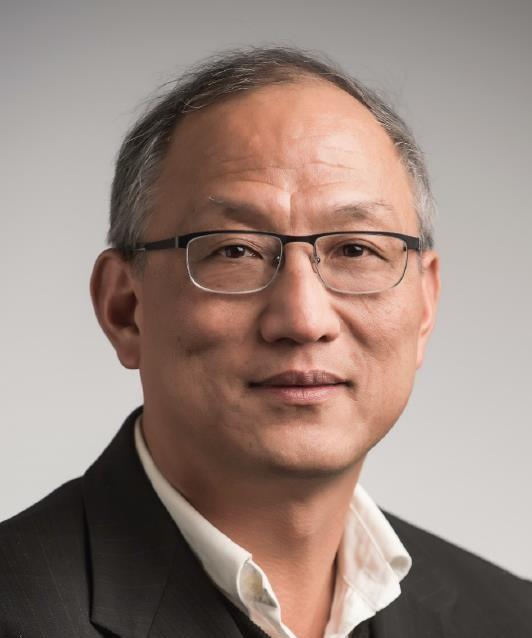
Chair Professor, Division Head Su-Huai Wei
Materials and Energy
- Office Location
- Room B419
- Telephone
- +86-10-56981838
- suhuaiwei[at]csrc.ac.cn
- Education
B.S. in Physics, Fudan University, China, 1981
M. S. in Physics, College of William and Mary, USA, 1983
Ph. D. in Physics, College of William and Mary, USA, 1985
- Professional Employment
Su-Huai Wei received his B.S. in Physics from Fudan University in China in 1981 and Ph.D. from the College of William and Mary in USA in 1985. He joined the Solar Energy Research Institute (it is now National Renewable Energy Laboratory or NREL) in 1985 as a postdoctoral researcher and later became Staff Scientist, Senior Scientist, Principal Scientist, Manager of the Theoretical Materials Science Group, and was an Institute Research Fellow at NREL before he joins CSRC in 2015. He is a Fellow of both the American Physical Society and The Materials Research Society. He has published more than 560 peer-reviewed papers in scientific journals by the end of July 2023, including more than 70 papers in the prestigious Physical Review Letters with more than 73000 citations (H index > 133 per Google Scholar).
- Research Interests
1. Optoelectronic properties of photovoltaic and light-emitting materials
2. Defect physics in semiconductors
3. Electronic structures and stabilities of alloys, superlattices, and interfaces
4. Novel properties in nano materials
5. Magnetic properties of semiconductors
6. Electronic properties of organic and hybrid semiconductors
7. Energy storage materials.
8. Electronic structure calculation methods.
- Awards/Honors
NREL Institute Research Fellow, 2014
Fellow of the Materials Research Society, 2014
Changjiang Chair Professor, Fudan University, 2007
Fellow of the American Physical Society, 1999
- Representative Publications
- 1. S.-H. Wei and H. Krakauer, “Local-density-functional calculation of the pressure-induced metalization of BaSe and BaTe”, Phys. Rev. Lett. 55, 1200 (1985).
- 2. S.-H. Wei and A. Zunger, “Role of metal d states in II-VI semiconductors”, Phys. Rev. B 37, 8958 (1988).
- 3. S.-H. Wei, L. G. Ferreira, J. E. Bernard, and A. Zunger, “Electronic properties of random alloys: special quasirandom structures”, Phys. Rev. B 42, 9622 (1990).
- 4. S.-H. Wei and A. Zunger, “Optical properties of zinc-blende semiconductor alloys: effects of epitaxial strain and chemical ordering”, Phys. Rev. B 49, 14337 (1994).
- 5. S.-H. Wei, “Overcoming the doping bottleneck in semiconductors”, Comp. Mater. Sci. 30, 337 (2004).
- 6. Y. Gai, J. Li, S.-S. Li, J.-B. Xia and S.-H. Wei, “Design of narrow-gap TiO2: A passivated codoping approach for enhanced photoelectrochemical activity”, Phys. Rev. Lett. 102, 036402 (2009).
- 7. H.-X. Deng, J.-W. Luo, S.-S. Li, and S.-H. Wei, “Origin of the distinct diffusion behaviors of Cu and Ag in covalent and ionic semiconductors”, Phys. Rev. Lett. 117, 165901 (2016).
- 8. J. Yang and S.-H. Wei, “First-principles study of the band gap tuning and doping control in CdSexTe1-x alloy for high efficiency solar cell”, Chin. Phys. B 28, 086106 (2019).
- 9. X.-J. Zhao, Y. Yang, D.-B. Zhang, and S.-H. Wei, “Formation of Bloch flat bands in polar twisted bilayers without magic angles”, Phys. Rev. Lett. 124, 086401 (2020).
- 10. X. Zhang and S.-H. Wei, “Origin of efficiency enhancement by lattice expansion in hybrid perovskite solar cells”, Phys. Rev. Lett. 128, 136401 (2022).



